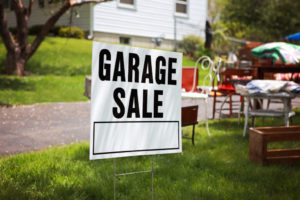 I know… it’s winter time and there is nothing growing, but isn’t that the best time to dream about the upcoming garden season?
I know… it’s winter time and there is nothing growing, but isn’t that the best time to dream about the upcoming garden season?
Seed catalogs usually start coming before the New Year, so if you garden at all, you probably have a few at hand. Open them, but not to the vegetables! Look at the flowers instead and look forward to a tasty harvest. There are many edible flowers that usually “go to waste” as far as food is concerned.
If you’ve ever grown bachelor buttons (or cornflowers as they’re sometimes called), you might have let a tasty treat go to seed or wilt on the dining room table. While their flavor is quite mild, it can range from an almost cucumber flavor to a mildly spicy zing to a slightly sweet flavor, depending on growing conditions.
They’re easy to grow and the seeds are available almost anywhere. Plant them where they can get plenty of sunshine, but not in a hot location. They grow well in poor soil and can handle some drought, but keep the soil damp until the seeds sprout. Pick the flowers in full bloom and dress a salad with them, or serve as a condiment to soups or sandwiches.
 Daylilies are weeds in some places, so common are they. All daylily flowers are edible, but the orange daylily is said to be the tastiest. I haven’t eaten all of them, so I can’t say, but I can say that orange daylily flowers, fresh or spent, are good. Trying to describe the flavor is hard, but I’d say it was like slightly sweet asparagus… if you can imagine that.
Daylilies are weeds in some places, so common are they. All daylily flowers are edible, but the orange daylily is said to be the tastiest. I haven’t eaten all of them, so I can’t say, but I can say that orange daylily flowers, fresh or spent, are good. Trying to describe the flavor is hard, but I’d say it was like slightly sweet asparagus… if you can imagine that.
Daylilies grow from rhizomes (which can be eaten, too, by the way) in just about any soil, but they appreciate a good dose of compost each spring. They come in many colors and flavors. Some are almost evergreen and some flowers last up to three days, but most daylilies are what their name implies – a day and it’s done. That’s good, because you can eat the bud, the open flower and the spent flower, so you don’t miss anything if you can’t get to the garden every day. How to eat them? Raw, cooked, stuffed, sauteed, boiled… however you choose. (In fact, you can prepare them much like you would squash blossoms – see my article here.)
Then there is the lowly dandelion and my favorite wild plant/flower/weed or whatever you want to call it. Pick freshly opened dandelion flowers in the morning for the best flavor. Put them briefly in salt water to dislodge any bugs or dirt, then rinse well. Cut or pinch off the green backing, which tends to be bitter, then dip them quickly into pancake batter and then fry until lightly browned. They taste a little like mushrooms when cooked this way. You can also scatter the petals into salads, scrambled eggs or put them in sandwiches. Cook them into soup or skillet meals. You can even make gravy with them (recipe here)!
They taste a little like mushrooms when cooked this way. You can also scatter the petals into salads, scrambled eggs or put them in sandwiches. Cook them into soup or skillet meals. You can even make gravy with them (recipe here)!
If you don’t have dandelions growing already, you can buy the seeds to plant your own. Be aware that they are invasive, but they won’t hurt a thing. Dandelion roots bring up valuable minerals from deep in the earth where most plants can’t reach, so having a few growing here and there is good for the soil.
Other edible blossoms include lavendar, nasturtiums, dill, squash, cilantro, pansies, violets and herb flowers like chives, basil and cilantro.
There are very many edible flowers, but not every flower is edible, so don’t start trying everything you see.
— Never eat flowers unless you’re absolutely certain you can identify them. Some are slightly poisonous; some are more so.
— Never eat flowers that are bought at a flower shop or grocery store because they’ve been sprayed with chemicals to eliminate bugs.
— Never eat flowers bought at roadside stands or farmer’s markets for the same reason unless you can establish without a doubt that they’ve been organically grown.
— Never eat flowers that grow near a highway or busy road.
— Always remove any green parts of a flower as they are bitter and may irritate the digestive system.
— You may be allergic to some flowers, especially if you tend to have allergies, so be cautious until you know for sure they won’t bother you.
Take some common sense precautions, plant the flowers you think are pretty, then read up on which ones you can eat and how to prepare them. A front yard flower bed can be just as edible and tasty as the backyard vegetable garden. Now is the time to plan on it!






























